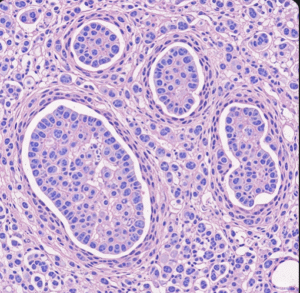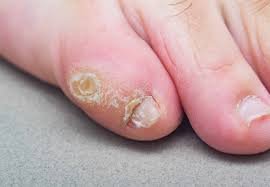Overview
Pelvic pain is a common symptom affecting both men and women, referring to discomfort in the lower abdomen or pelvis—the area between the hip bones. It can be acute or chronic, mild or severe, and may significantly impact daily life, work, and overall well-being. Pelvic pain is not a disease itself but often a signal of an underlying condition in the reproductive, urinary, gastrointestinal, or musculoskeletal systems.
➤ Pelvic pain can be intermittent or persistent, depending on its cause.
➤ It may be sharp, dull, cramping, or aching, with variations during activity, menstruation, or sexual intercourse.
➤ Early evaluation is important, as untreated pelvic pain can lead to chronic conditions or complications.
In Korea, specialized clinics provide comprehensive diagnosis and treatment for pelvic pain, combining modern imaging, minimally invasive procedures, and holistic care approaches.
Key Facts
➤ Pelvic pain can be acute (sudden onset) or chronic (lasting longer than six months).
➤ It may originate from gynecological, urological, gastrointestinal, or musculoskeletal problems.
➤ Chronic pelvic pain affects a significant portion of women, particularly during reproductive years.
➤ Men may experience pelvic pain due to prostate disorders, urinary tract infections, or muscular issues.
➤ Effective management involves accurate diagnosis, individualized treatment, and ongoing follow-up.
What is Pelvic Pain?
Pelvic pain refers to pain located in the lower abdomen or pelvic region. This region includes the bladder, uterus, ovaries, prostate, colon, rectum, and supporting muscles and ligaments.
➤ Medical definition: Any discomfort perceived in the area bounded by the lower abdomen and the pelvis.
➤ Classification:
➤ Acute pelvic pain – sudden onset, often linked to infections, injury, or organ obstruction.
➤ Chronic pelvic pain – persists for six months or longer, often with complex causes.
➤ Presentation: Pain can be localized or diffuse, sharp or dull, constant or intermittent, sometimes radiating to the lower back or thighs.
Understanding pelvic anatomy is essential for pinpointing the source of pain and guiding treatment.
What Symptoms Are Related To
Pelvic pain is frequently accompanied by additional symptoms that may indicate the underlying cause:
➤ Abnormal bleeding or discharge – may suggest gynecological or urinary conditions.
➤ Urinary symptoms – urgency, frequency, or pain during urination.
➤ Gastrointestinal symptoms – constipation, diarrhea, bloating, or nausea.
➤ Painful intercourse – often linked to reproductive organ disorders.
➤ Menstrual irregularities – cramping or changes in cycle in women.
➤ Lower back pain or hip discomfort – associated with musculoskeletal causes.
Identifying these associated symptoms is crucial for differential diagnosis and effective management.
What Causes / Possible Causes
Pelvic pain can result from a wide range of gynecological, urological, gastrointestinal, and musculoskeletal conditions:
➤ Gynecological causes (in women):
➤ Endometriosis – tissue growth outside the uterus causing chronic pain.
➤ Ovarian cysts – fluid-filled sacs that may rupture or grow large.
➤ Pelvic inflammatory disease (PID) – infection of reproductive organs.
➤ Fibroids – benign uterine tumors leading to pressure or cramping.
➤ Urological causes:
➤ Urinary tract infections (UTIs) or bladder infections.
➤ Interstitial cystitis – chronic bladder pain.
➤ Prostate conditions in men, such as prostatitis or enlargement.
➤ Gastrointestinal causes:
➤ Irritable bowel syndrome (IBS) – cramping and bowel irregularities.
➤ Constipation or bowel obstruction – causing pressure and discomfort.
➤ Inflammatory bowel disease (IBD) – ulcerative colitis or Crohn’s disease.
➤ Musculoskeletal causes:
➤ Pelvic floor dysfunction – tight or weak muscles causing chronic pain.
➤ Hernias or nerve compression in the lower abdomen.
➤ Other factors: Stress, prior surgeries, or systemic diseases like autoimmune disorders may exacerbate pelvic pain.
When Should I See My Doctor
Seeking medical evaluation is crucial when pelvic pain is persistent, severe, or accompanied by alarming symptoms:
➤ Sudden, severe pain that interferes with daily activities.
➤ Fever, vomiting, or unexplained bleeding along with pelvic pain.
➤ Pain during urination or bowel movements suggesting infection or obstruction.
➤ Chronic pain lasting more than six months requiring diagnostic assessment.
➤ Reproductive concerns, such as difficulty conceiving or irregular menstrual cycles.
Early consultation with healthcare professionals in Korea ensures timely diagnosis, prevention of complications, and access to advanced treatment options.
Care and Treatment
Treatment of pelvic pain focuses on relieving discomfort, addressing underlying causes, and improving quality of life:
➤ Lifestyle modifications:
➤ Heat therapy or warm baths to ease muscle tension.
➤ Gentle exercise and pelvic floor therapy to strengthen supporting muscles.
➤ Stress reduction techniques, such as yoga or mindfulness.
➤ Medications:
➤ Pain relievers (NSAIDs) for mild to moderate discomfort.
➤ Hormonal therapy for women with endometriosis or fibroids.
➤ Antibiotics for infections affecting urinary or reproductive organs.
➤ Procedures and interventions:
➤ Minimally invasive surgery for ovarian cysts, fibroids, or endometriosis.
➤ Nerve blocks or trigger point injections for musculoskeletal pelvic pain.
➤ Pelvic floor physical therapy for chronic dysfunction.
➤ Monitoring and follow-up: Regular evaluation helps prevent recurrence and adjust treatment plans.
Treatment Options in Korea
Korean hospitals and clinics provide comprehensive, cutting-edge care for pelvic pain:
➤ Advanced gynecology services – laparoscopic surgery, endometriosis management, and minimally invasive interventions.
➤ Urology clinics – specialized care for UTIs, interstitial cystitis, and prostate disorders.
➤ Gastroenterology centers – IBS and IBD management using modern diagnostic tools.
➤ Multidisciplinary pelvic pain programs – integrating gynecology, urology, physiotherapy, and pain management.
➤ Personalized rehabilitation plans – combining physical therapy, lifestyle counseling, and pharmacological treatment.
➤ State-of-the-art diagnostic imaging – MRI, ultrasound, and CT scans for precise evaluation.
Patients in Korea benefit from highly skilled specialists, modern hospital infrastructure, and coordinated care, which leads to more accurate diagnosis, faster recovery, and improved quality of life for pelvic pain sufferers.













